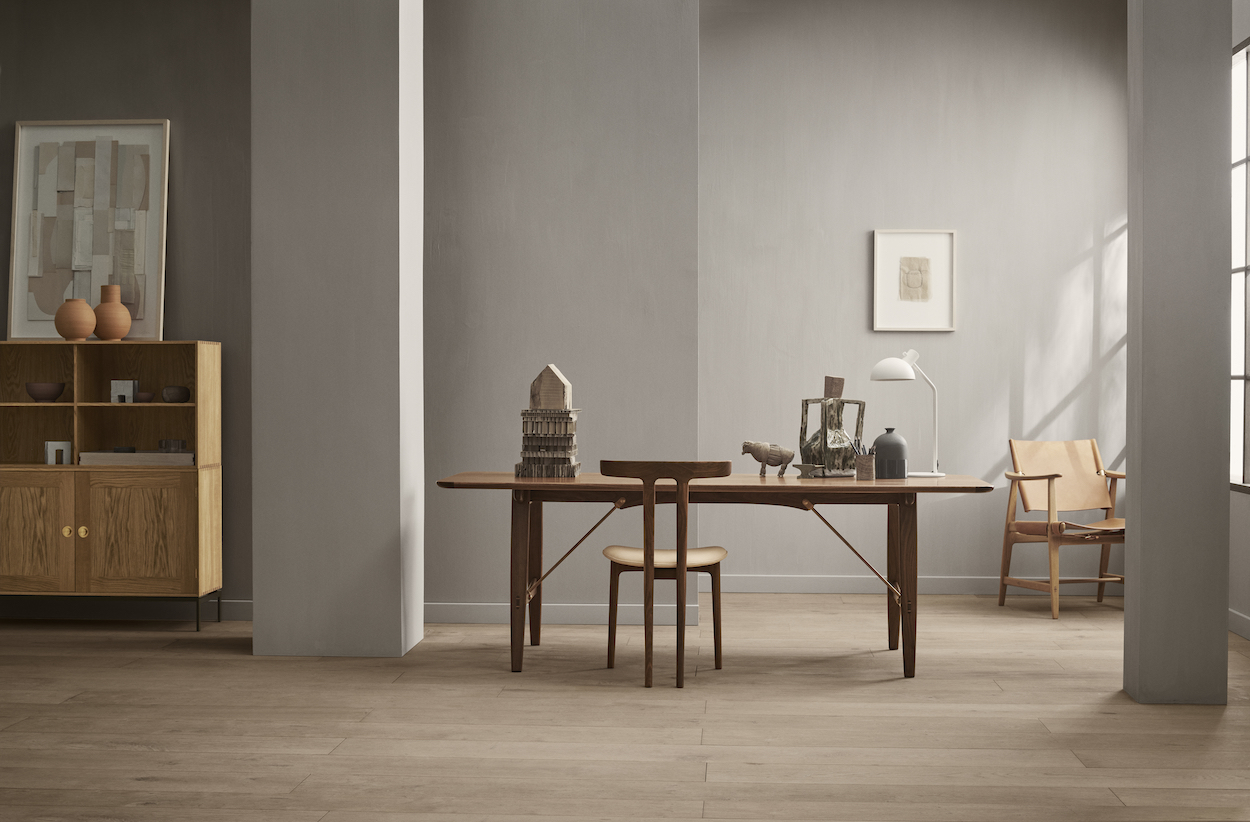Ole Wanscher may not be the first name that comes to mind when one thinks of Danish design, but the late architect was instrumental in helping shape the movement’s look and feel during mid-century. He viewed furniture design as an inextricable branch of architecture—perhaps a result of studying under Kaare Klint, widely considered the father of Danish Modernism, who infused clean lines, resilient materiality, and functionalism into furniture during a time when style and ornamentation reigned supreme. Wanscher picked up right where Klint left off when he passed away, in 1954, and ended up producing such seminal pieces as the Colonial Sofa and OW58 T-Chair that emphasized this rigorous approach.
Knud Erik Hansen, the third-generation CEO of Carl Hansen & Søn, took a particular liking to the latter chair. The Danish furniture mainstay has reintroduced the OW58 T-Chair to its expansive roster, joining the designer’s Colonial Chair, Egyptian Stool, and Beak Chair. “Ole Wanscher had a knack for in-depth design,” says Hansen. “He sought to find ideal furniture constructions, which he then gave a more modern expression.” To say the OW58 T-Chair is expressive feels like an understatement. With a T-shaped backrest that merges with tightly placed back legs to impart a three-legged appearance, the chair verges on sculpture.
Of course, achieving the seamless carpentry transitions in the OW58 T-Chair’s joints is a time-consuming process. The piece is manufactured exclusively at Carl Hansen & Søn’s factory in Gelsted, Denmark, where skilled joiners and craftsmen ensure unmatched process quality. “Owning a Wanscher chair is an adventure every day,” the Danish newspaper Politiken wrote in 1958, “and will be so even several hundred years from now, for this is how long it lasts.” The relaunched version stays loyal to the original besides one minor adjustment: the seat height was raised an inch to provide optimal ergonomics for today’s users, who are generally taller their 1950s forebears.



